Situated in the Black Hills of South Dakota, an area of invaluable cultural significance to the Lakota people, Wind Cave National Park preserves sprawling prairie landscapes, the historical home of plains animals like prairie dogs, rattlesnakes, pronghorn, and bison.
The park also encompasses one of the longest and most complex caves on Earth—Wind Cave was the first cave in the world to be protected as a national park.
Cave tours are without question the most popular activity in Wind Cave National Park, but there are many other things to do in the park as well.
It’s a fantastic national park to see wildlife, and watching bison in their natural habitat is an unforgettable national park experience.
So, if you’re planning to visit the park and would like to know where you can see bison in Wind Cave National Park, you can find the best bison viewing areas below. Plus some important bison safety tips!
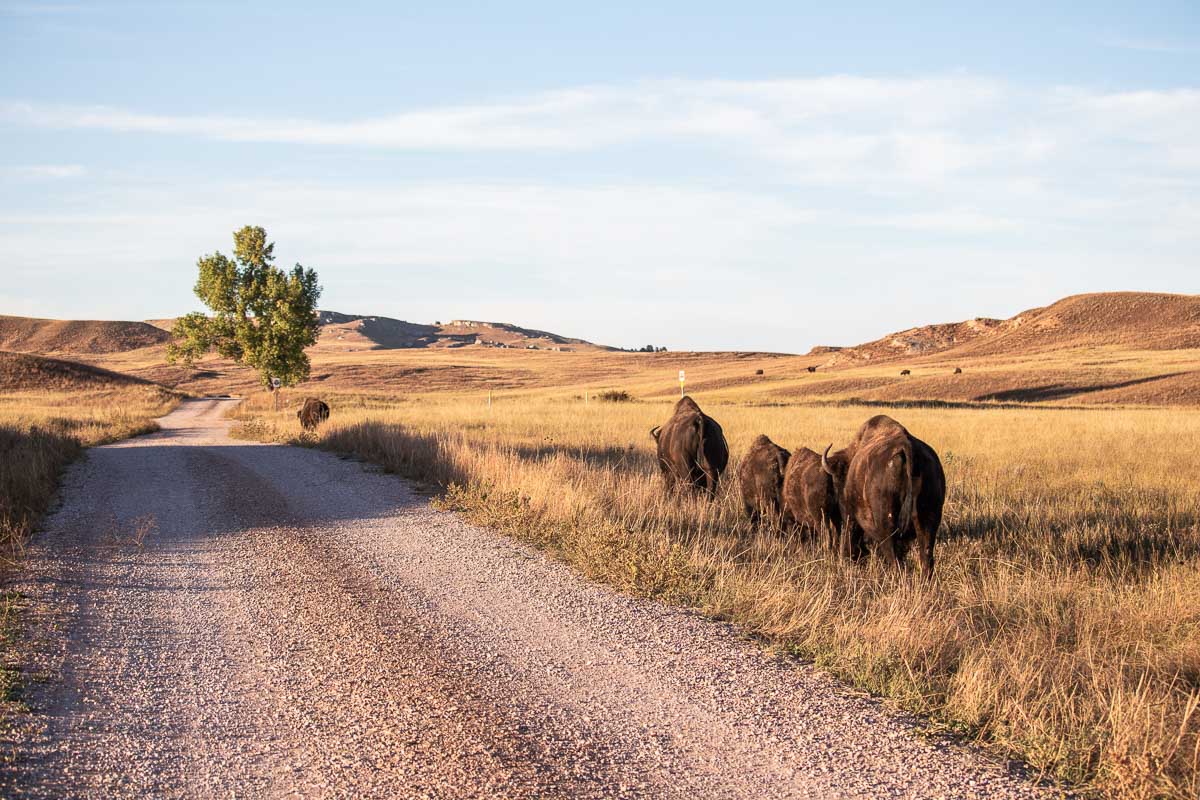
This blog post about the best places to see bison in Wind Cave National Park contains affiliate links. You can read more about our Terms of Use / Disclosure here.
Contents
Bison, Buffalo or Tatanka?
Even though the scientific name of these animals has bison in it twice (Bison bison), many people call them as “buffalo.” Their official name is “American bison.” Although technically incorrect, both buffalo and bison are often used interchangeably in the United States.
The word buffalo comes from the French “bœuf” and originated among French fur trappers who came across the animals in the early-1600s.
True buffalo are found only in Africa and Asia and were known to the French at the time they first encountered American bison.
So, while the American name buffalo is actually a mix-up between two different animals from different continents, the word is still in use to describe American bison today.
In this article, as well as in all other references to these animals elsewhere, I use the scientifically correct name of “(American) bison.”
Additionally, “tatanka” is another name for American bison. This is what the Lakota call these animals, which are of exceptional importance in their culture.
According to Lakota oral tradition, the first humans emerged from Wind Cave, as did the first bison, which explains “the close connection that plains tribes had, and continued to have, with bison,” the National Park Service says.
As a nomadic people, the Lakota were dependent on bison for essentially everything, from food and clothing to tools and fuel, and they’d follow the bison herds constantly.
The Lakota might also refer to bison as “pte.” (The Tribe is sometimes known as “pte oyate,” which means “buffalo nation.”)
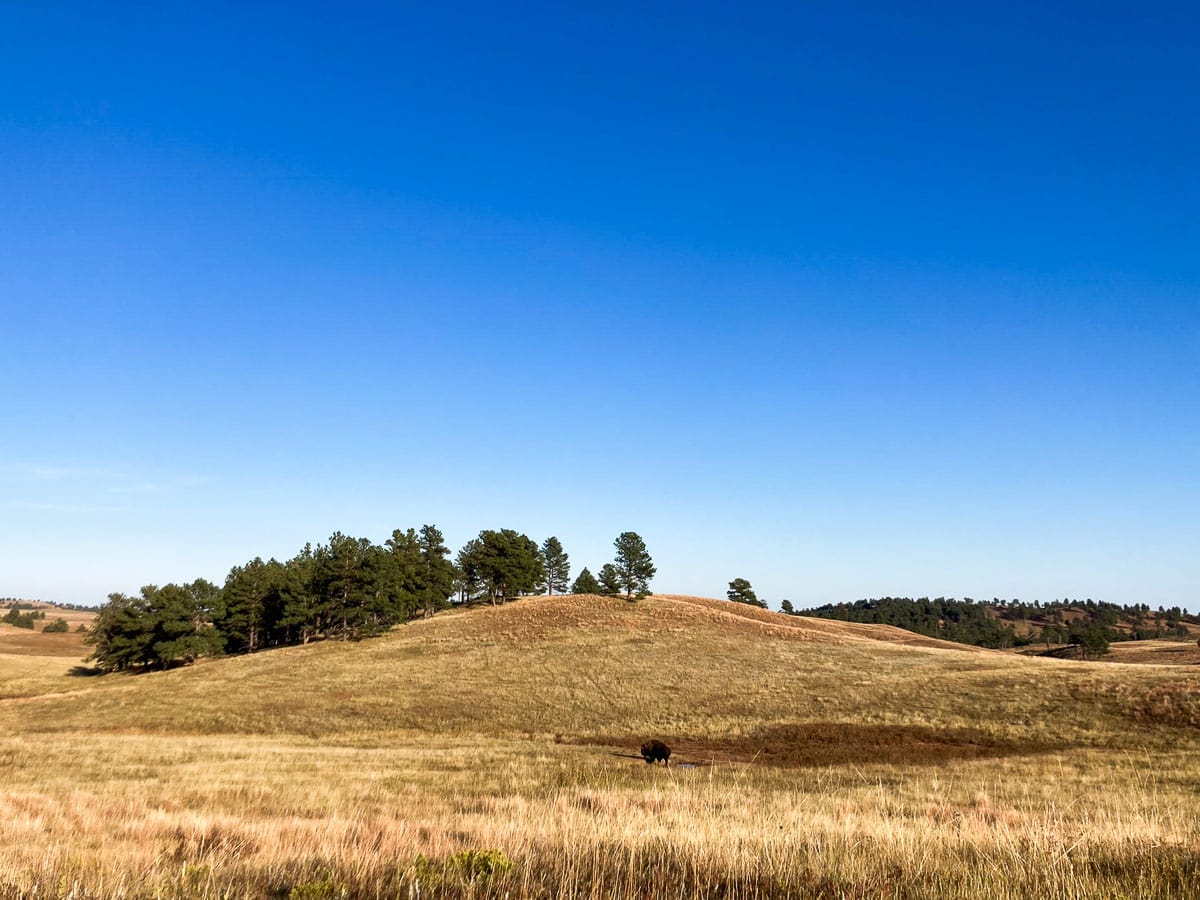
Bison in Wind Cave National Park
Bison came perilously close to extinction in the late-1800s—there were fewer than a thousand left in all of North America in 1900—but a devoted group of conservationists managed to save a few hundred animals.
After Wind Cave National Park was established in 1903, the American Bison Society transported fourteen animals—seven bulls and seven cows—from the New York Zoological Gardens, which is now the Bronx Zoo, to the national park in 1913.
In 1916, six additional American bison were sent to Wind Cave from the large Yellowstone National Park herd, which has lived in the park continuously since prehistoric times.
Those twenty original bison are the ancestors of the current Wind Cave National Park bison herd.
That herd now consists of hundreds of individual animals, with numbers ranging between 250 and 500, which is a size that can be supported by resources within the national park.
Actually, the Wind Cave bison herd is one of only two genetically pure American bison herds in a national park. The other one is, of course, in Yellowstone National Park. (Other bison herds show signs of either cattle introgression or inbreeding, or both.)
While this is obviously a great thing for Wind Cave National Park, it’s also cause for great concern.
It’s of the utmost importance to preserve this genetic purity, which can be used to reintroduce pure-bred American bison elsewhere on the continent.
The great challenge lies in keeping the genetically pure Wind Cave National Park bison herd separated from the herd in neighboring Custer State Park, which does include hybridized animals.
When visiting both parks, which I strongly recommend doing, you’ll clearly see the fences marking the boundaries and separating both bison herds.
3 Best Places to See Bison in Wind Cave National Park
The rolling prairie landscapes of Wind Cave National Park are the perfect, and historical, home of herds of bison. Nowadays, you can see the genetically pure Wind Cave bison in a few different locations.
Bison Flats
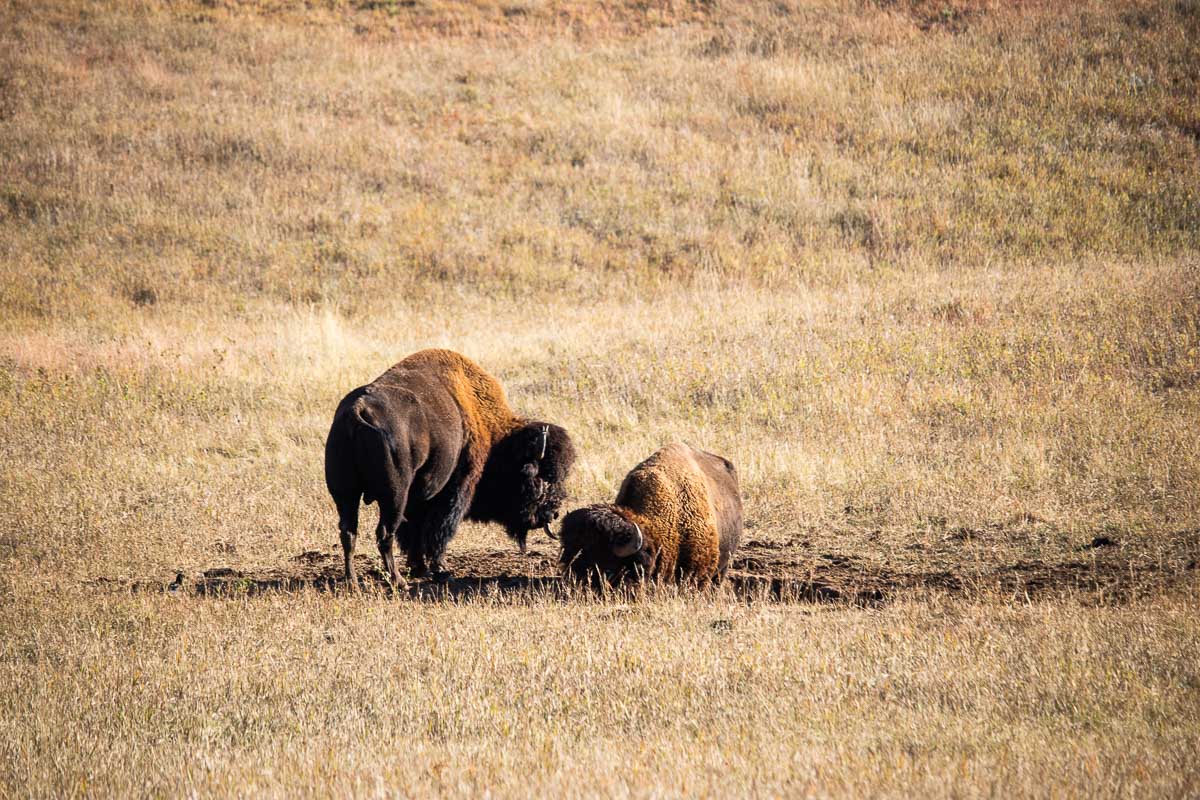
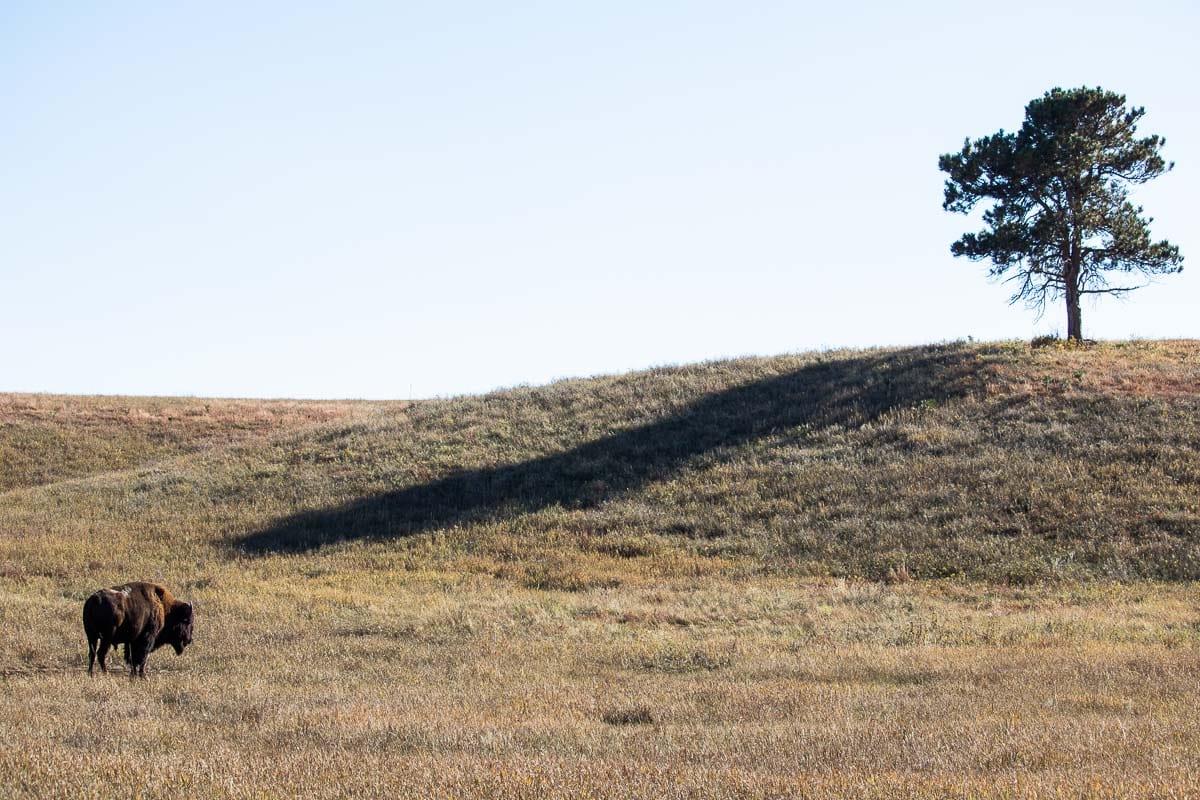
“This part of the park is a good place to look for Wind Cave’s hoofed mammals,” the park says on its website. Its name totally gives it away, but Bison Flats is a great place to see bison at Wind Cave.
Bison Flats is on Highway 395, just south of the Wind Cave Visitor Center. There are a few roadside overlooks that provide perfect vantage points to see these imposing mammals in their natural habitat.
The bison herds occasionally do cross the road, so bison jams are also not uncommon here. Be prepared to wait them out, or rather, enjoy them, when driving through the park.
Additionally, Bison Flats is also a great area to see pronghorn. Fond of wide open areas, they particularly seem to like the gentle slopes near the visitor center. There are a few prairie dog towns in the area, too.
NPS 5 and 6
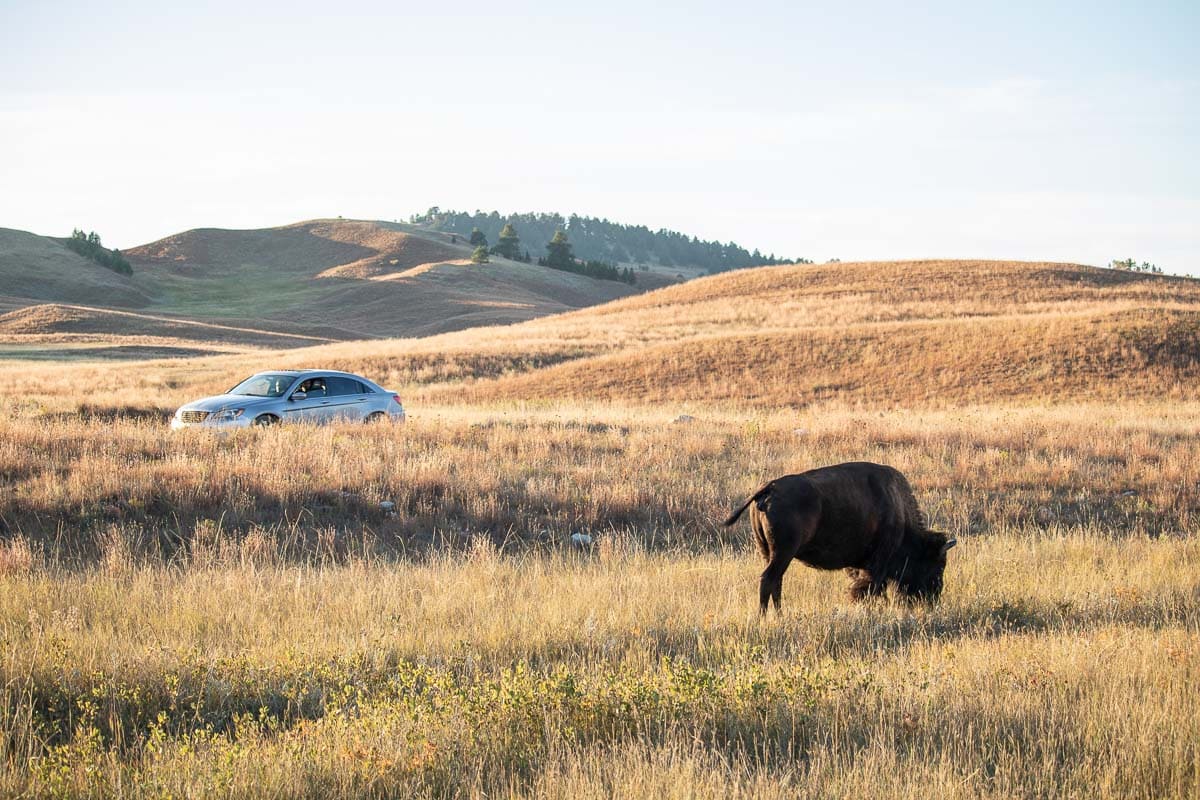
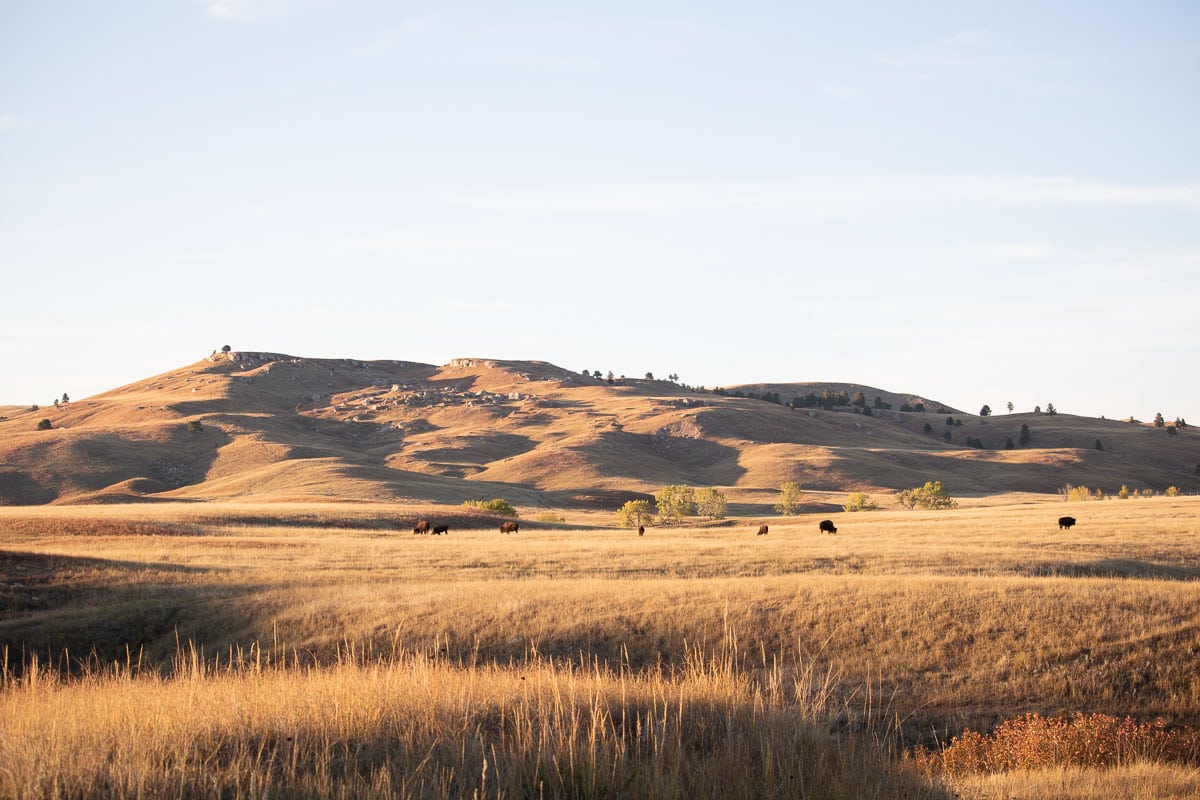
While Bison Flats does provide pretty good bison viewing opportunities, I personally prefer the backcountry roads in Wind Cave National Park.
Far away from the asphalt, and subsequent crowds, of Highway 87 or 395, the gravel roads in the park’s eastern portion are phenomenal for viewing wildlife, including bison. This is where I’ve seen most of the bison at Wind Cave.
NPS 5 and 6 are two gravel roads that bisect the eastern part of Wind Cave National Park.
NPS 5 turns away from paved Highway 87 near the northwestern border of the park, while NPS 6 enters the park from Custer State Park in the northeast.
The National Park Service itself says that it “is an ideal place to look for some of the park’s bison herd as they are drawn to the large prairie dog towns and open spaces.
Often, herds of cows and their calves are found within sight of NPS 6 as you drive north into Custer State Park.”
For bison sightings on NPS 6, I’d recommend spending some time observing (or hiking) Boland Ridge. Also keep your eyes peeled for elk and pronghorn here. Both of those are often seen on the hillsides.
Note: These backcountry roads are narrower than regular paved roads. Gravel pullouts are available to park and enjoy the scenery, or to let other vehicles pass. Usually pretty well-maintained, they’re suitable for most passenger vehicles, but remember that there is no gas and poor cell service. Driving them after storms or in winter is not recommended.
Additionally, if you’re visiting Wind Cave National Park with your dog, these are amazing roads to take your pet for a walk!
Red Valley
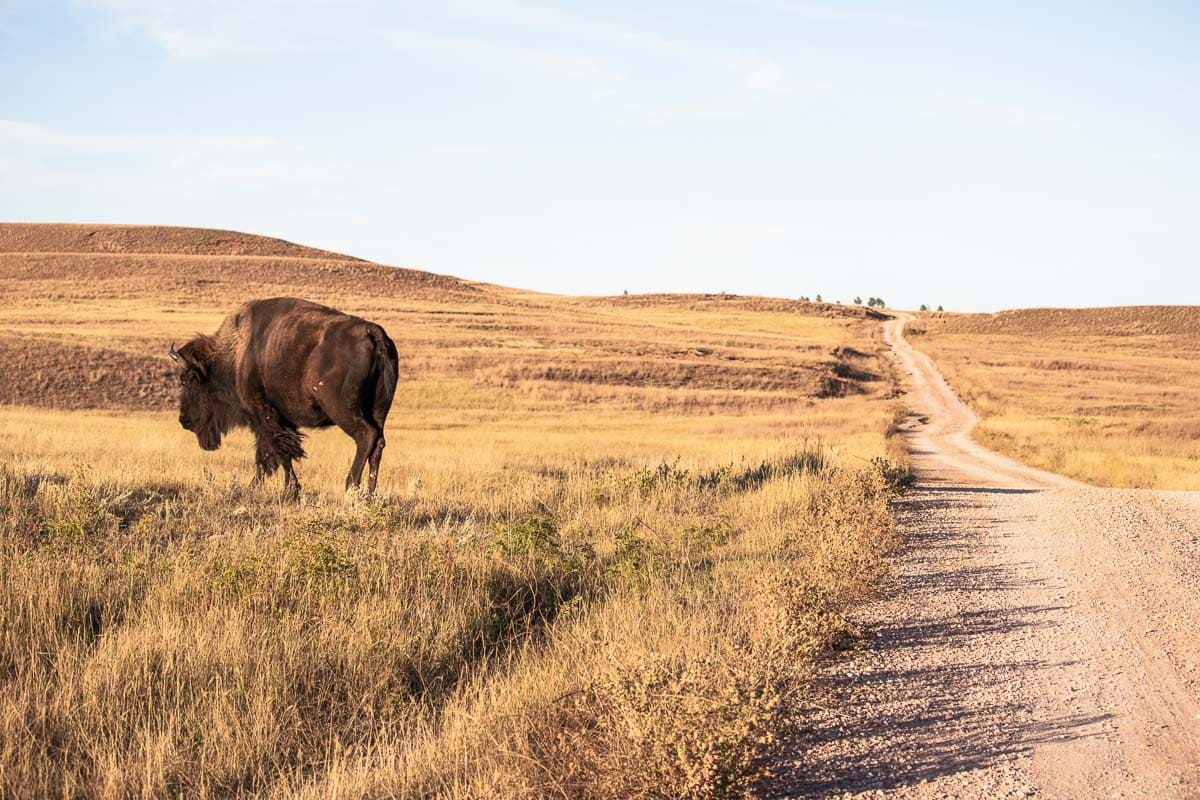
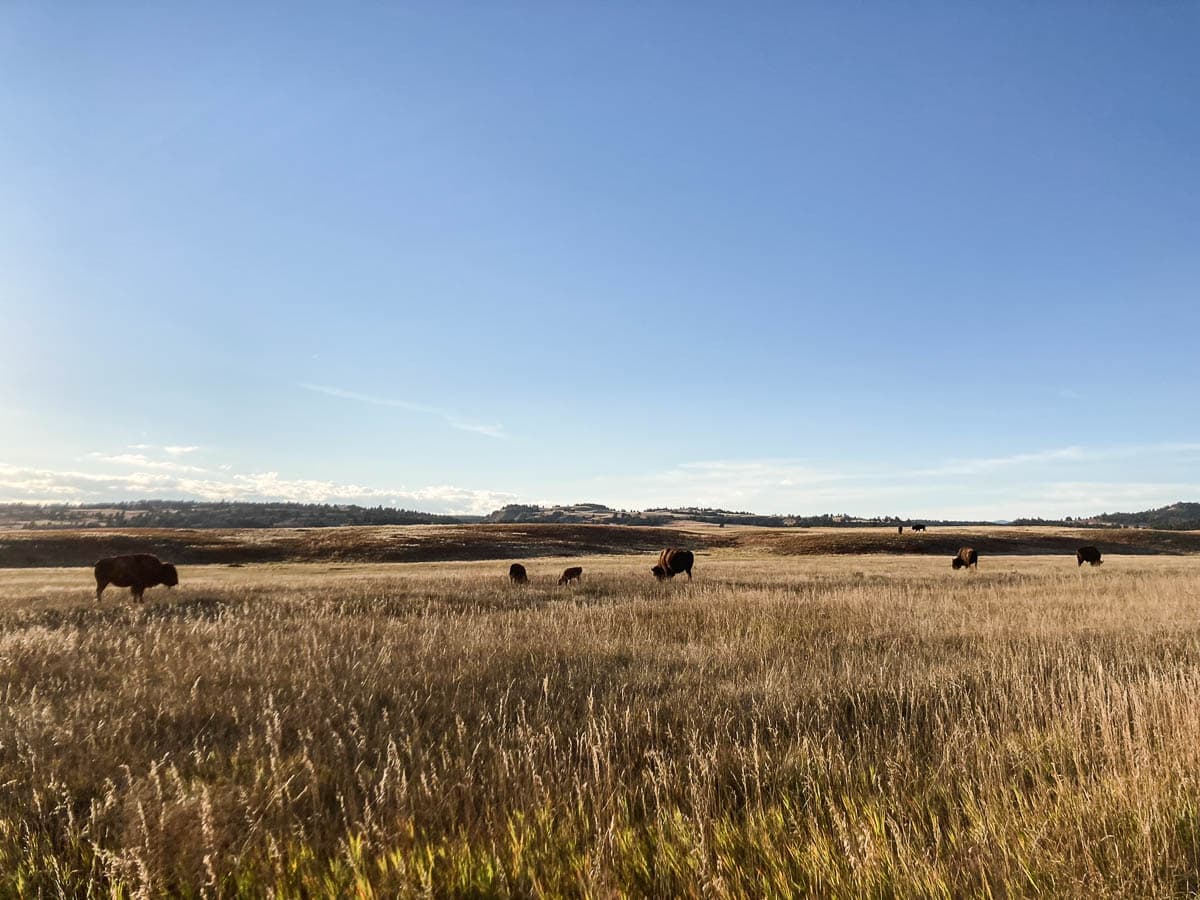
Both the NPS 5 and 6 backcountry roads converge in the scenic Red Valley, the remotest part of Wind Cave National Park accessible by vehicle.
This beautiful area of rolling grasslands and hills is roughly between the southern entrance of NPS 5 into national park and its intersection with NPS 6. It is in the far southeastern corner of Wind Cave National Park.
Although this is officially along NPS 5, the Red Valley is well worth highlighting separately. This is the area where I’ve seen most bison at Wind Cave.
When I entered the park from the south on NPS 5, there were bison quite literally blocking the entrance. I had to wait some time before they decided to let me in.
As I drove further into the Red Valley, I saw numerous other bison, some lounging in the grass, others walking along the road.
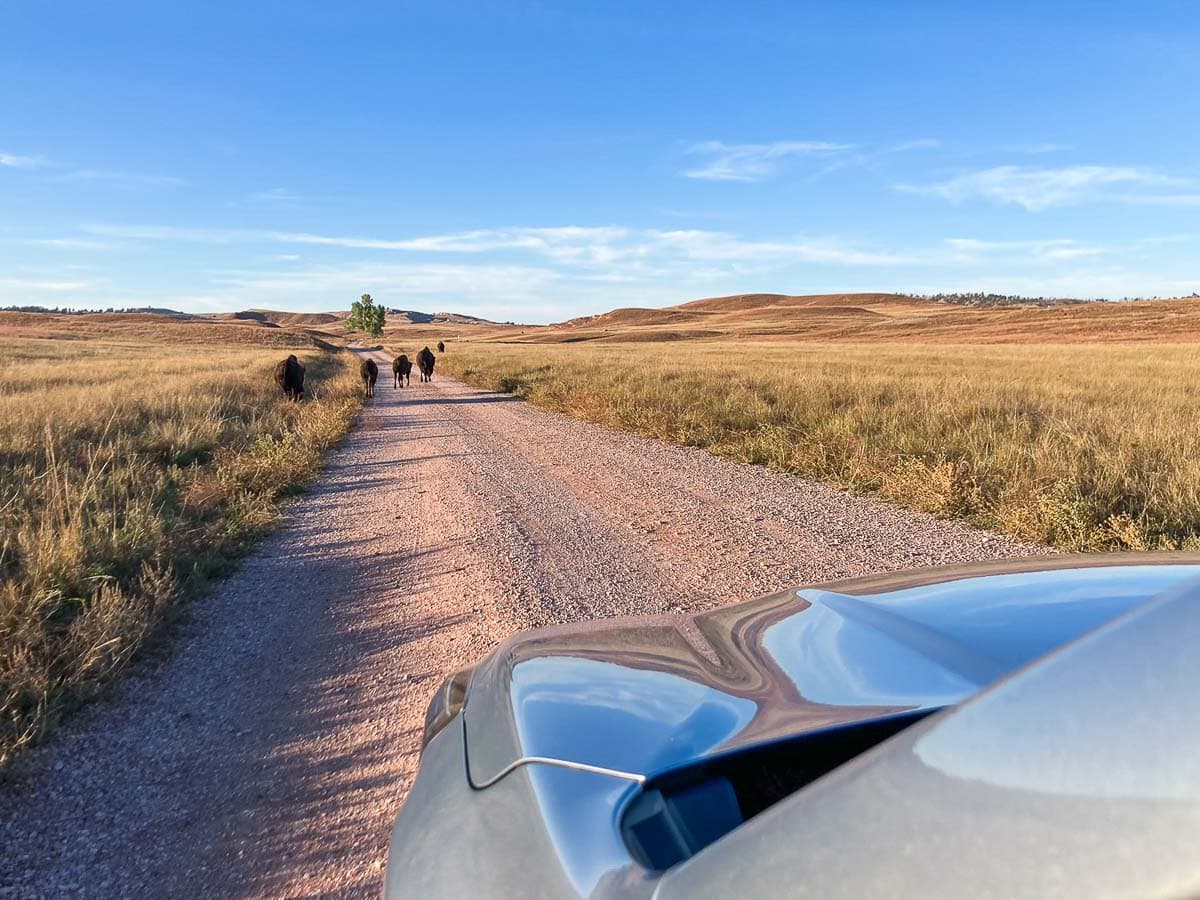
Wind Cave National Park Bison Roundup
While the Wind Cave National Park bison herd roams (mostly) freely for most of the year, there is a brief period when significantly fewer bison are around. This is during the annual bison roundup in the fall, usually sometime in October.
For this reason, if you’d like to see large numbers of bison at Wind Cave, I recommend visiting another time of year.
(One of my visits to Wind Cave National Park was in early-October and there were noticeably fewer bison around, especially at Bison Flats.)
Map of the Best Places to See Bison in Wind Cave National Park
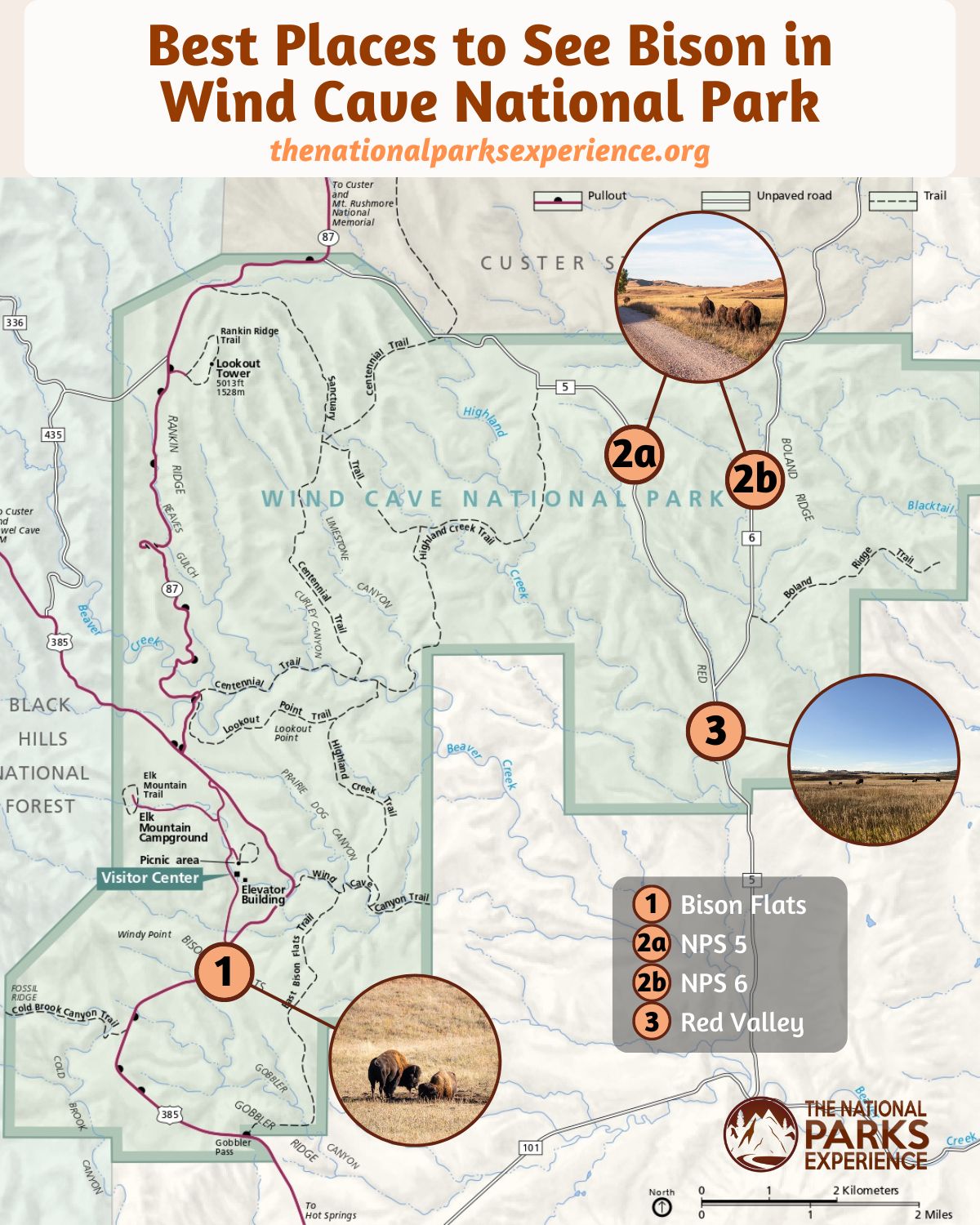
Bison Safety in Wind Cave National Park
They may appear aloof and seem relaxed, but the bison in Wind Cave National Park are very much wild animals. Even if they look calm, they can be grumpy and easily triggered.
Bison are huge and powerful animals, and can be unpredictable. They can run three times as fast as a human. When agitated, they can inflict severe injuries and might even go as far as to kill something they perceive as a threat.
Therefore, the park advises visitors to stay at least 100 feet from bison, as well as all other wildlife, and to not provoke the animals.
Always be vigilant when hiking or observing bison at Wind Cave.
For more tips and information, I recommend reading this bison safety blog post.
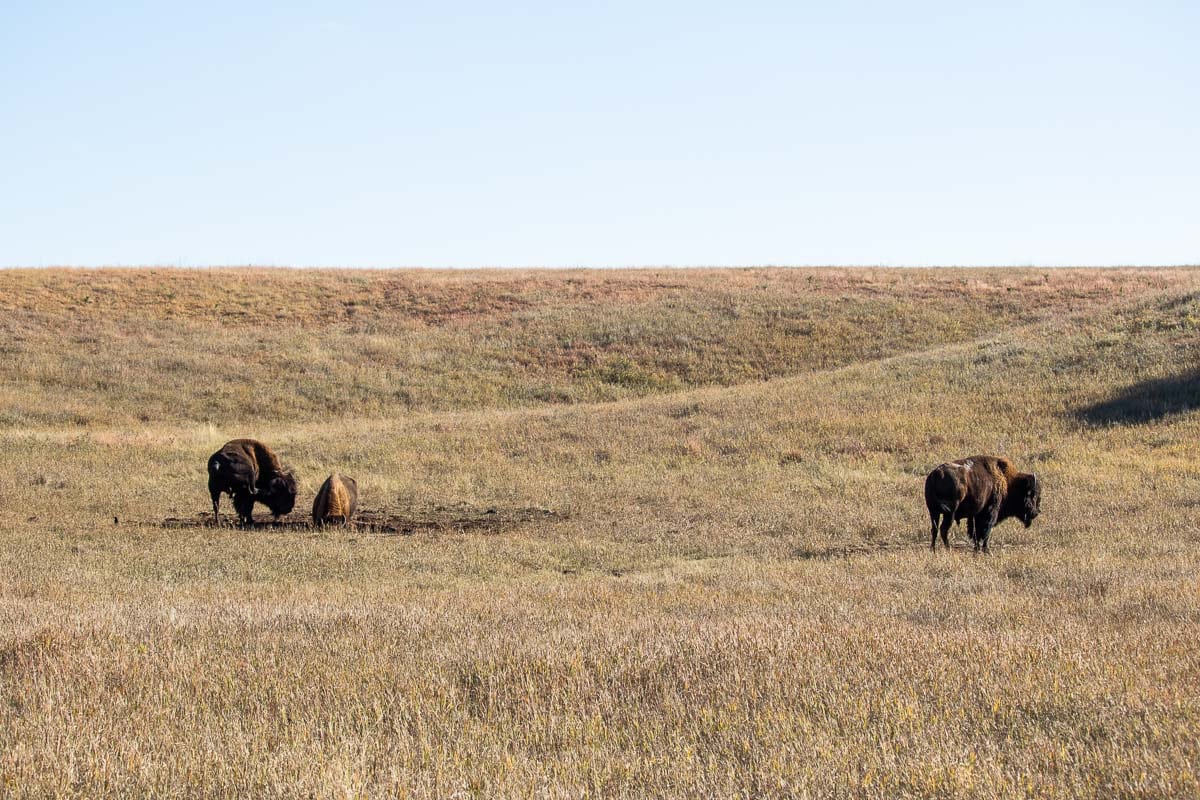
More About Wind Cave National Park
- Park Website
- Travel Guide
- Topographic Map
- Top Things To Do in Wind Cave National Park
- Where to See Wildlife in Wind Cave National Park
- Accommodation
